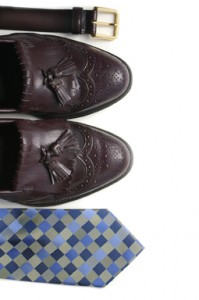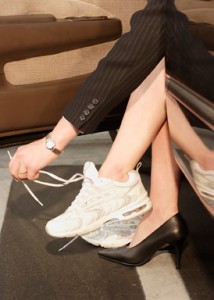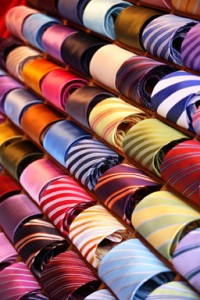 One could say that the style of one’s attire is a way to express one’s attitudes and aspirations. Our clothes can improve our self-esteem considerably. Just think of so many times when things we put on made us feel much better.
One could say that the style of one’s attire is a way to express one’s attitudes and aspirations. Our clothes can improve our self-esteem considerably. Just think of so many times when things we put on made us feel much better.
Number and variety of clothing items made us forget about a single “fashion” which is in vogue, but each person has his or her own style, which coincides with a growing need of modern man for individuality and exceptionality.
Today each person adds his or her own distinctive mark to fashion trends, thus expressing one’s own style and an image of life and convictions one lives in.
Besides the clothes we wear and our behaviour in accordance with business activities, what influences the working environment and the people we spend most of our time are surely accessories we put on. It can be the shoes, both with male and female employees, their bags, jewellery, a tie or a brooch…. Similarly, we can also pass on strong messages or reactions onto our environment by colours we wear.
Shoes as an inevitable detail
Even though the business dress code dictate the height of heels to 2 – 4.5 cm, as is also recommended by physicians in respect to health of women who spend most of their time on high heels, the overall impression is what really counts.
Some psychologists claim that much can be deduced about a woman and her character by the shoes she wears, so that high-heeled shoes are mainly worn  by “alpha-females”, while those creative ones never do out without a comfortable pair of shoes. Ballet slippers are favourable with women who have style and are patient, while heavy and cumbersome shoes with thick soles are worn by non-conformist women who do not make a compromise easily and who cherish their individuality.
by “alpha-females”, while those creative ones never do out without a comfortable pair of shoes. Ballet slippers are favourable with women who have style and are patient, while heavy and cumbersome shoes with thick soles are worn by non-conformist women who do not make a compromise easily and who cherish their individuality.
However, shoes are not female attributes exclusively, they also reveal much about men. Namely, those who choose classic shoes made of leather are considered to be rather emotional and sometimes vulnerable. Somewhat more modern design and harder material the shoes are made of tell us that the man is domineering and self-confident, and he is aware of the world that surrounds him. The way a man keeps his shoes reveals his character. If his shoes are tidy and always clean so is his life. Those who do not care much about the shoes or their shine, in other words those who do not mind how their shoes look at any moment, they also act in the same way in various situations they find themselves in.
 Tie – multi-functional detail in business attire of every man
Tie – multi-functional detail in business attire of every man
When going on a business trip a woman packs at least several dresses, jackets, skirts and trousers, matching them with shirts, blouses, scarves, several pairs of shoes and bags, and appropriate jewellery for each combination of clothes.
A man, on the other hand, is fully equipped with one suit, a pair of shoes and two shirts, but he needs several ties – one for the meeting, another one for the business dinner, a third one for cocktails and receptions.…
A tie is generally accepted symbol of a man’s suavity and earnestness, a detail that can characterize a man with good taste.
Meaning of colours in and out of the office
Certain colours can evoke different associations in people around you. The meaning of colours is also altering from one culture to another, as well as clothing styles or the business dress code.
We are not only exposed to universal natural colours, but each one of us also uses varied colours for numerous purposes in one’s surroundings, which is the result of certain cultural-traditional patterns existing in every society.
It is well known that in different cultures all over the world colours have different meanings. One colour in a certain culture may induce definite effect, while in another culture the same colour incites a completely different psychological impression. In our western culture the white colour denotes youth, innocence, and marriages are performed in white – but reversely, in eastern cultures of India or China the white colour symbolizes death.
Psychology of colours has its practical application in marketing. Use of colours in marketing is connected directly to the product to be marketed and to the picture of the product we want to create. Depending on the message to be transmitted the chosen colours can boost it, accentuate it or be opposite to it. Naturally, the use of colours has to be adapted to the market where the product is advertised, in accordance with the associations a certain colour may evoke among the target group.
Here are some examples as to how colours affect us as persons and influence our business ability:
BLACK – sophistication, elegance, seduction, mystery; Persons wearing black clothes present themselves as authoritative and slightly aggressive. Their predominant characteristic is persistence. Those are persons who reassess themselves and others constantly searching for the truth. Those persons are emotional, but they rarely show them off.
BLUE – trust, reliability, affiliation, relaxedness; Persons choosing blue colour most often for their attire radiate calmness and stability, and they give impression of being balanced. Blue can sometimes reflect a sad or depressed person, but it is still the best choice for an interview when applying for a post as it symbolizes loyalty and devotion. While in the western and American cultures the blue colour stands for masculinity, composure, authority, force and power, in Japanese culture it means nothing else but – theft!
PURPLE – eminence, dignity; Purple colour represents dreamers and sensitive people who often rely on their own intuition. At first glance, they seem to be aloof and in their own world. Their relation with others varies from devout concern to complete insensitivity.
YELLOW – warmth, sunshine, happiness; Persons wearing yellow are redolent of grace, nobility, they seem to be childish and joyous. In Western Europe and America, however, this colour has a different meaning altogether – it depicts caution and cowardice.
GREEN – nature, freshness, coldness, growth, wealth; Green clothes reflect a proud, tenacious, and unwavering person. Such people are aware of themselves and of their influence onto others. Green colour marks future, youth and energy in all cultures. Persons wearing green are active and they are often project initiators. Men dressed in dark green appear to be virile and hale.
BROWN – brown colour signifies open persons, those who have understanding for other people and who are easy to communicate with. They are not prone to extremes, they are stable and they give much attention to moral values. They can be impeded by their excessively conservative views.
RED – excitement, strength, joy, provocativeness, speed, danger; Red colour symbolizes force and power. It is a bad choice when choosing one’s attire for business meetings or negotiations, and even when settling differences with friends or associates. Red is worn by those who know how to enjoy life. It can denote rage or danger, but also joy and celebration.



































 Srpski
Srpski English
English